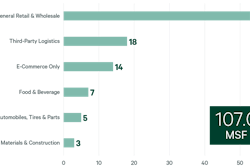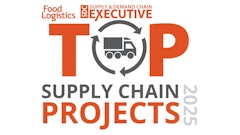
For organizations across warehousing, supply chain, and logistics, this past holiday season was far from ordinary. During a time when companies have typically staffed up for their peak season, a challenging economic outlook instead caused a portion of these light industrial organizations to undergo major layoffs.
According to the U.S. Bureau of labor statistics, in November alone, warehousing jobs decreased by 13,000 positions across the country. At a time of the year when companies have historically ramped up staffing, the fall of 2022 showed a significant drop in warehouse employment. One that was the biggest since April 2020 and when the world was shutting down amid the outbreak of COVID-19.
Bound by outdated hiring methods this past peak season left business leaders and HR managers with the tough decisions to cancel shifts, offer voluntary time off (VTO) and even make major staffing cuts because they didn’t have the volume for the workers they scheduled. This does not need to be the way forward for the industry. In order to stay afloat in today’s ever evolving labor landscape, companies must consider modernizing their warehousing employment model to help future proof their hiring processes.
Out with the old, in with the new
For many warehousing employers, the reality is that when it comes to staffing, you are competing with an entirely new set of options for today’s hourly workers. The pandemic paved the way for unprecedented flexibility across industries and as we kick off 2023 employees in the warehousing and supply chain space are looking for more of the same. By leaning into a gig economy like approach companies can seamlessly staff up and down successfully meeting both the requirements of the workforce as well as the fluctuating demands of the business, without the added costs associated with recruiting and training new staff.
The Workforce-as-a-Service (WaaS) model is revolutionizing outdated hiring methods, offering employees the benefits of gig work. Gig work includes scheduling flexibility, transparency, consistent opportunities and attracting qualified employees. Who may otherwise look to gig work in other industries such as driving, delivery services and shopping services. Savvy ahead-of-the-curve employers are looking to the WaaS model because it provides on-demand access to pre-vetted, high-quality talent and the ability to scale up or down to meet seasonal fluctuations or market needs.
There are even WaaS platforms with a W-2 employment model that help eliminate employee misclassification risk for workplaces. A reality often associated with the 1099 structures. Leveraging a W-2 model also provides workers with the protections they need and deserve, including unemployment insurance and worker’s compensation coverage.
Providing workers with W-2 benefits through a gig-style platform has the power to increase overall operational efficiencies so employees get the jobs and flexibility they want, and employers get a skill-matched workforce that is ready, engaged and doesn’t require additional overhead to manage.
Give the people what they really want
Alongside flexibility, a recent survey found that when it comes to accepting a job, more than half of Americans ranked wages as the most important factor followed by location, schedule such as mornings vs. night shifts, ownership of their schedule and opportunities for growth.
Hourly workers like to be rewarded for a job well done and are more likely to take a job that recognizes their efforts and offers the opportunity to level up. Career advancement is no longer something reserved for white-collar workers and the hourly workforce is officially seeking the same opportunities to hone their skills and advance their careers.
Amid a challenging financial outlook, app-based work platforms offer unparalleled securities to both employers and employees. With 70% of U.S. workers seeking additional work to combat the increased cost of living, gig-style platforms allow workers to find work that meets their financial needs. The hourly workforce needs the stability of regular paychecks now more than ever. Workforce-as-a-Service platforms can match hourly workers with roles that span months or even years, while offering the same flexibility and dealer’s choice as other gig platforms. Allowing workers to decide where and when they want to work while also giving them the freedom to choose for how long.
How to make it stick
Quality workers are an invaluable asset in the warehouse industry. As companies look to not only attract but also retain talent amid the unstable recovery of the post-pandemic labor market, warehousing managers must consider new incentives to make and keep their workers happy. When employees know they’re working for a company that cares about them, they’re more likely to stick around.
Survey findings also revealed that 78% of hourly workers feel their employer's interest in their happiness impacted their work, and 63% said they would be more willing to leave a job they don’t love then they previously would have in the pandemic. It's not all about the money. While findings show 57% of workers prioritize fair wages/pay when considering a job, there are additional criteria to take into consideration. In fact, 56% of workers prioritize work/life balance when accepting new work, 55% consider benefits, and 51% prioritize scheduling flexibility, while 47% believe enjoying their work to be most important and lastly 39% would opt for an organization that actively works to elevate their mental health.
In order to remain competitive, warehousing managers must consider rolling out perks that matter most to the hourly workforce such as offering on-demand pay as well as incentives. Employers must also consider ways to encourage professional development and opportunities to grow within a role. They can offer regular training sessions on the company’s dime that allows workers to brush up on existing skills while also learning new ones. It’s true that career growth continues to be a personal priority for the hourly workforce and on top of that investing in good talent will ultimately serve your organization’s bottom line.
Looking ahead, we anticipate increased adoption of a more gig-like model as employers in manufacturing, logistics, fulfillment and supply chain seek to offer the types of things employees really want. Taking a page out of the gig economy play book.
![Pros To Know 2026 [color]](https://img.sdcexec.com/mindful/acbm/workspaces/default/uploads/2025/08/prostoknow-2026-color.mduFvhpgMk.png?auto=format%2Ccompress&bg=fff&fill-color=fff&fit=fill&h=100&q=70&w=100)







![Pros To Know 2026 [color]](https://img.sdcexec.com/mindful/acbm/workspaces/default/uploads/2025/08/prostoknow-2026-color.mduFvhpgMk.png?ar=16%3A9&auto=format%2Ccompress&bg=fff&fill-color=fff&fit=fill&h=135&q=70&w=240)









